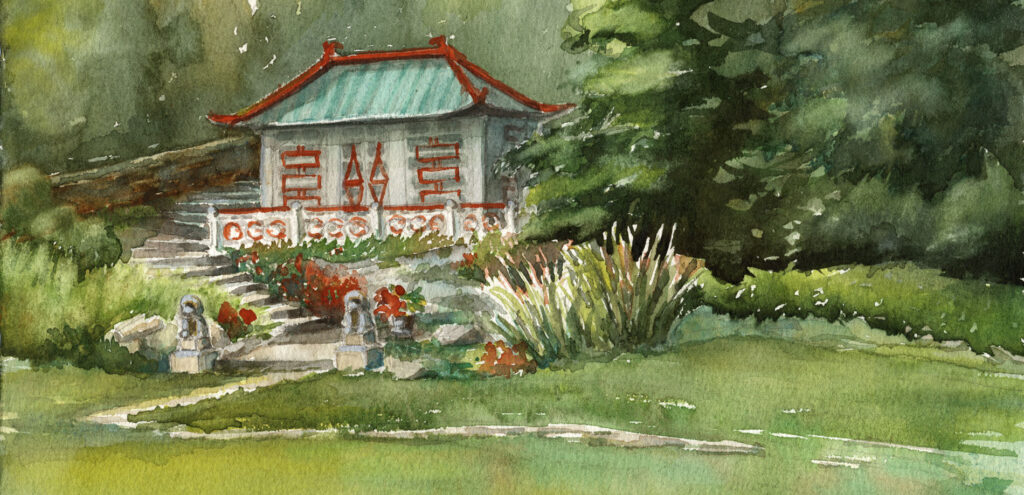
In the few posts I’ve made on this blog, I’ve been an advocate for plein air painting — which is painting on location, rather than working from reference photos.
I think plein air and “from life” work is important because of the advancements I saw in myself and in my work once I started painting from life. And that advancement is not just from a technical or skill-based perspective; I also felt more confident and trusted the value of what I was doing more than I had when I was chasing reality, as it was portrayed in photographs.
Photographs are a valuable tool. But they also set you up for failure and doubt. When I teach, I always have my students work from a copy of one of my watercolors, rather than looking at a photograph. Translating a photograph is hard, and often the photograph so dominates your vision of a scene that you end up trying to copy the photograph, rather than translate it.
It’s not necessary to work in landscape and face the elements with specialized gear to experience artistic growth. The same experience applies to any work from life, whether it is portrait or figure work, or still life. The goal is to look at something, slow down, study it, and endeavor to represent it in whatever media you choose. And in that process, you will find that chasing perfection is not helpful and does not make for a better painting or drawing.
You can learn to paint and draw in a representative way and have the freedom to breathe life into the subject or scene on your paper, panel or canvas, without getting caught in the trap of perfection and chasing every tiny detail simply because it’s in the photograph.
More often than not, the slavish rendering of all those photographic details will ultimately be a distraction to your composition. That’s the danger of the photograph. And it’s hard to escape.
